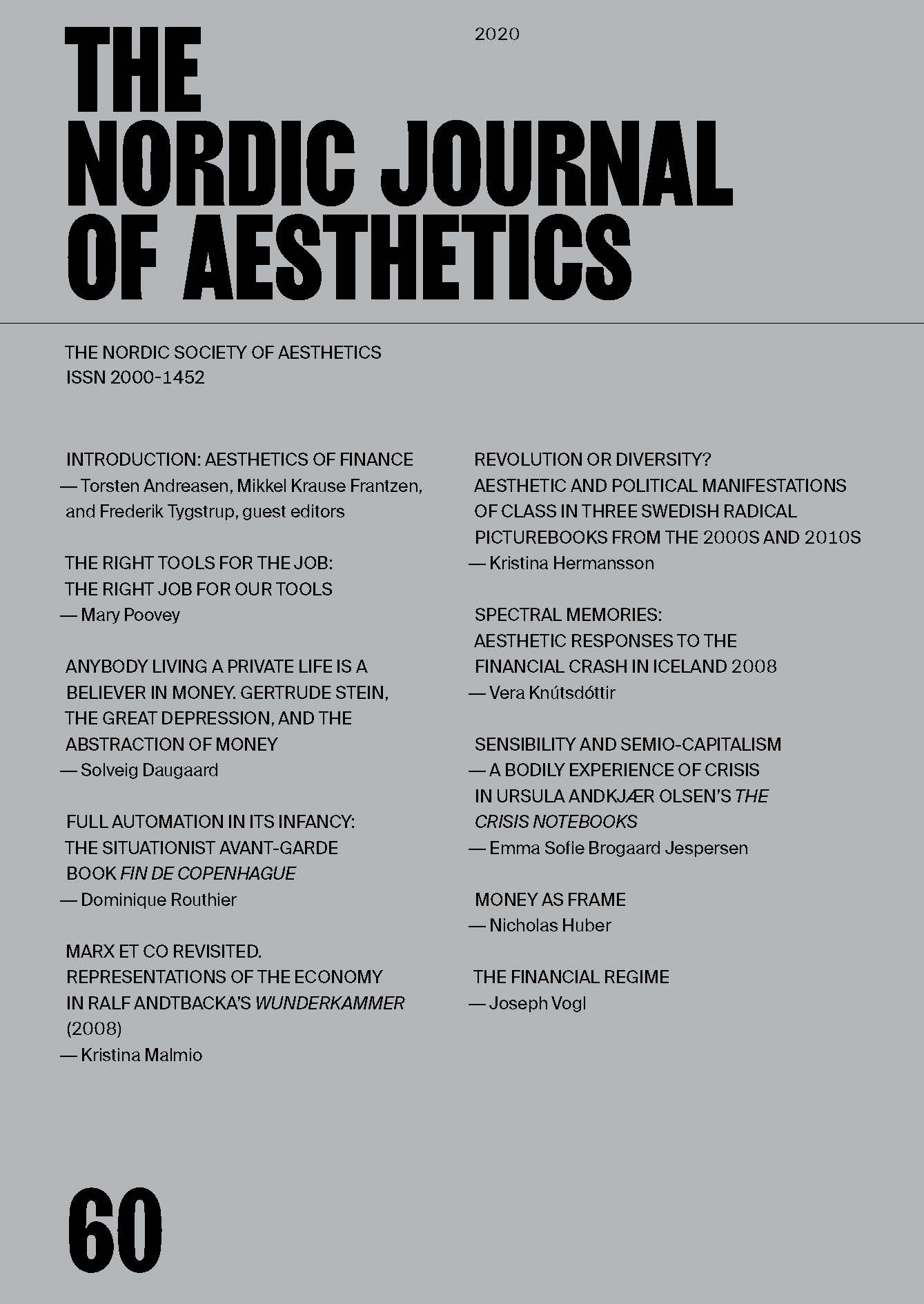MONEY AS FRAME
DOI:
https://doi.org/10.7146/nja.v29i60.122846Keywords:
Money, Class Analysis, COVID-19, Unemployment, Marxist TheoryAbstract
This essay responds to “Money as Art: The Form, the Material, and Capital” by the Marxist economist Costas Lapavitsas with refer-ence to the triple manifestation of crisis in the United States dur-ing the spring months of 2020. By triangulating the role of money in the COVID-19 pandemic, the ensuing mass unemployment, and the historical nationwide revolt in response to the police mur-der of George Floyd predicated on a counterfeit twenty-dollar bill, Nicholas Huber makes a three-part claim. First, that acceptance of the Marxist theory of fetishism forecloses the possibility of conceiv-ing of capitalist money as art in the sense developed by Lapavitsas, insofar as the latter tends toward transhistorical concepts of both art and money. Following from this, any aesthetic function of mon-ey in the capitalist mode of production is inseparable from its total social function; that is, capitalist money is at once an economic, political, cultural, and aesthetic mediation unlike any other. Finally, Huber draws on Louis Marin’s typology of the frame in correspond-ence with Erik Olin Wright’s integrated class analytic framework to argue that the question of whether money is art or not leads us to a dead end. Huber suggests that a crisis such as the one unfolding in 2020 raises instead the more challenging question of what social system must come into being, such that a theory of capitalist money as art becomes intelligible.
Downloads
Published
How to Cite
Issue
Section
License
Authors who publish with this journal agree to the following terms:
- Authors retain copyright and grant the journal right of first publication with the work simultaneously licensed under a Creative Commons Attribution License that allows others to share the work with an acknowledgement of the work's authorship and initial publication in this journal.
- Authors are able to enter into separate, additional contractual arrangements for the non-exclusive distribution of the journal's published version of the work (e.g., post it to an institutional repository or publish it in a book), with an acknowledgement of its initial publication in this journal.
- Authors are permitted and encouraged to post their work online (e.g., in institutional repositories or on their website) prior to and during the submission process, as it can lead to productive exchanges, as well as earlier and greater citation of published work (See The Effect of Open Access).




